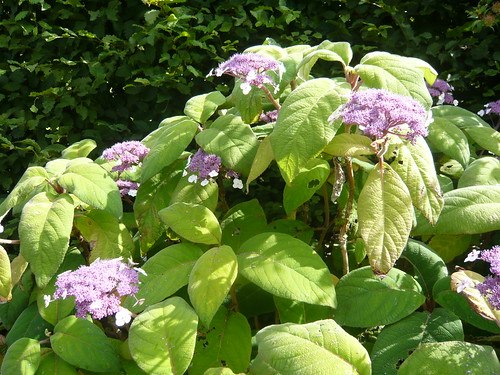Hydrangea Aspera Shrub

The leaves of this Hydragea Aspera are one of its key features. As with other Aspera subspecies the branches and leaves are ‘strigose’ which botanically means ‘beset with appressed straight and stiff hairs’ that means rough and furry to me.
This specimen shrub is 4-5 feet tall and whilst it comes from the Himalayas some plants can be a bit tender.
The Purple flowers open to a clear white (that is almost burned out on this photo) but the overall effect is pleasing. The flowerheads make good internal decorations.
The colouring of Hydrangea Aspera is not affected by aluminium or acidity of the soil.
Other Hydrangea species that are closely related include H.Involucrata, H. Strigosa and H. Villosa.  H. Sargentiana is a taller more leggy coarse shrub brought from China by E H Wilson with a low growing H. Longipes and H. Galbripes.
For Complete Hydrangeas book click here and for cheap colourant click this link

Hydrangeas available from Thompson & Morgan